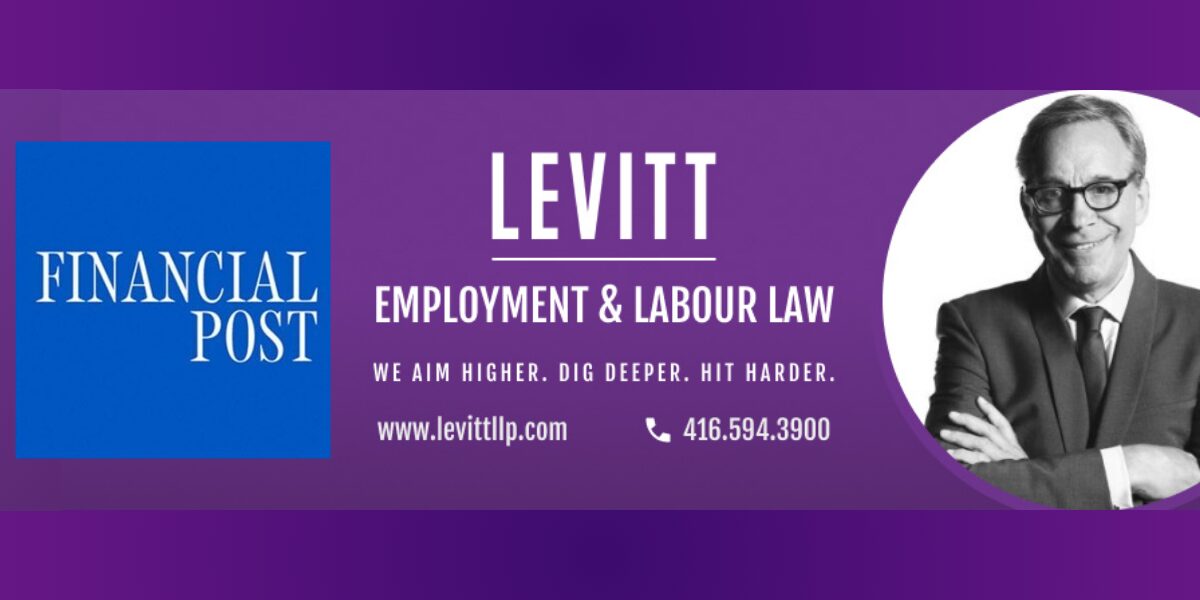By Howard Levitt and Lavan Narenthiran
Executives and leaders like Bev Priestman seldom operate in a silo, and they usually do not have as much discretion as the public might think
Canada’s latest sporting scandal, in which the women’s national soccer team’s head coach, Bev Priestman, was suspended from the Olympics for ordering staff to spy on another team’s practice using a drone, brings to mind questions of organizational liability. Other recent scandals, including a sexual assault coverup by Hockey Canada and the suspension of Chicago Blackhawks’ general manager Stan Bowman (who recently landed a new gig with the Edmonton Oilers), show the wide range of responses used by organizations in the face of controversy.
This phenomenon is not limited to sports. Across every industry, when scandal hits, a leader is almost always put on ice, terminated, or “encouraged” to resign. In any organization, high-ranking officials — executives, directors and managers — have a fiduciary duty to act in the best interests of the company. As the saying goes, with greater power comes greater responsibility, so when something goes wrong these fiduciaries often bear the brunt of the blame, whether deserved or not.
However, executives and leaders like Bev Priestman seldom operate in a silo, and they usually do not have as much discretion as the public might think. It is quite unlikely that Priestman — or any leader caught up in a similar scandal — would have acted entirely on their own, without the knowledge or approval of their organization and its other key players.
So why do we see these proverbial sacrificial lambs getting thrown under the bus so frequently, and is it legally justified?
When organizations find themselves entangled in controversy, they need to prove to the public and stakeholders that they are taking decisive action. Often that means finding a scapegoat to blame, which helps them appear proactive and possibly avoid lawsuits, falling stock prices, and further public outrage and reputational damage.
In some cases, these sacrificial executives could file substantial legal claims against their employers if they were unjustly reprimanded, forced to resign, or subjected to disparaging public statements. For instance, if an employer failed to thoroughly investigate an issue and did not give the executive a chance to present their side of the story, any termination or disciplinary action might be seen as premature.
If the employer had prior knowledge of the executive’s actions but only made them punishable once discovered, the executive could argue their actions were condoned by the organization. If the executive was never warned or disciplined before the discovery, the employer would have an especially tough time defending the discipline in court.
On the flip side, if an employer was genuinely unaware of the executive’s alleged misconduct, disciplinary action might be warranted, depending on the situation. Employers must tread carefully when navigating terminations or disciplinary decisions during high-profile scandals. If employers make a public spectacle with disparaging or derogatory remarks, the executive could be entitled to additional damages for bad faith or mental distress or simply to punish them.
Often, employers are aware of the potential for a wrongful dismissal lawsuit brought by the sacrificial executive. While this is a serious concern, it is sometimes outweighed by the employer’s desire to salvage its public image and avoid even larger lawsuits from other parties. The strategy is to show that the organization has addressed the issue, hoping to distance themselves from the scandal and shield themselves from third-party lawsuits. However, this legal maneuvering does not always pan out as expected.
Enter the concept of vicarious liability, a legal doctrine holding one party responsible for the wrongful actions of another, even if the responsible party didn’t directly commit the wrongful act. In employment relationships, this often means an employer can be held liable for the actions of an employee. But this doesn’t mean employers are liable for everything an employee does. If the alleged misconduct occurs within the employee’s job duties, and there is a legal connection between the wrongful act and the employment relationship, the employer might be held responsible.
In the case of the Canadian women’s soccer scandal, Bev Priestman seems to be shouldering the blame. The alleged incident occurred within the scope of Priestman’s role and has a legal connection to her employment. If New Zealand, the Olympics, or any other affected party sought to sue Canada Soccer for damages related to these actions, it would likely be vicariously liable.
Of course, the outcome always depends on the specifics of the case, including the nature of the actions and the relationship of the parties involved. Organizations should consult with employment lawyers prior to making such decisions to assess and mitigate risks. Likewise, executives who find themselves in this situation should meet with a lawyer to discuss their rights and potential risks.

